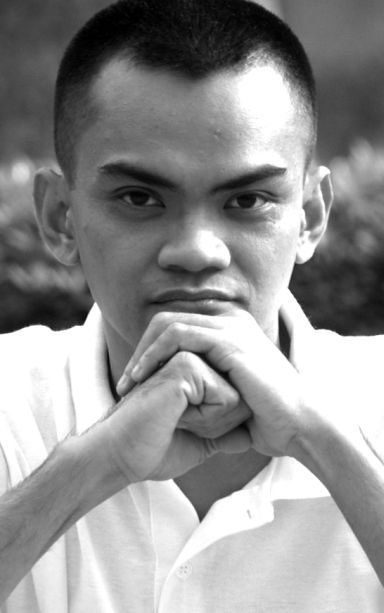
PAREDES
In 1967, five countries, namely Indonesia, Malaysia, Singapore, Thailand and the Philippines, founded an organization called the Association of Southeast Asian Nations (Asean). This was in the wake of the American involvement in the war in Vietnam and the rising threat of Chinese-sponsored communism in Laos, Cambodia and the rest of Southeast Asia.
All the member states had supported the United States in her campaign against communism in the region and the formation of the Asean was, in fact, sponsored by the superpower. America wanted a regional alliance of friendly states, similar to the North Atlantic Treaty Organization or Nato, that could thwart the growing influence of China, North Vietnam and the Soviet Union and thus tilt the balance of power to her side.
Regional stability and economic cooperation were the two most important goals of the Asean when it was founded. Stability, of course, meant peace and security from communism. Member states were committed to help each other fight this common enemy, particularly China, in case any of them is invaded. America had also pledged to help as its ally. And in those years, US forces were still strategically positioned in the naval and air force bases in the Philippines, ready to launch immediate counterstrikes anytime.
Locally, the fear of communism led to the rise of autocratic regimes among the member states. But America, which was already losing thousands of soldiers in the quagmire in Vietnam, was not so concerned with the curtailment of civil liberties in these Asean countries. In fact, it clandestinely supported these right wing regimes in their fight against local communist insurgents.
America eventually lost in the war in Vietnam and the Cold War later ended in the years that followed. The US bases in Clark and Subic were booted out by a vote in the Philippine Senate. America thus lost this strategic military advantage. From the original five member countries, Asean now grew to include Brunei, Laos, Cambodia, even the still officially communist state of Vietnam and the erstwhile fascist state of Myanmar.
Most of the right wing autocratic regimes in the original founding states have since fallen or given way to more moderate democracies or benevolent police states. But unlike in the European Union (EU), the Asean failed to agree on common political principles, such as the adoption of the universal human rights, rule of law and check and balance of power among the three branches of government, all hallmarks of Western style liberal democracy.
Instead, it insisted on its own varying indigenous styles of government and a rather unique method of working out conflict called the “Asean way.”
This is characterized by compromise, respect for sovereignty and non-interference. Part of it is the “silent” approach of cooling down tensions through closed-door negotiations in order to avoid embarrassments that could only escalate conflict.
The Asean way is supposed to reflect the diversity and peculiarities of Southeast Asian culture and politics. Indeed, while some countries tend to follow the Western liberal democratic model (Philippines and Indonesia), others preserve its centuries-old symbolic monarchy (Thailand and Brunei), theocracy (Brunei and in lesser degree, Malaysia), a secular socialist system (Vietnam), or a Confucian police state (Singapore). With this confusing diversity, it is difficult to agree on common terms when it comes to political principles.
Thus, it is no wonder why countries that continue to oppress their people were eventually granted membership status with virtually no criticism from other members. Discourse, or debate made open to the public, is no longer considered the Asean way.
This ambiguity or lack of standards is justified by claims of inclusivity or tolerance to cultural diversity. Asean soon granted dialogue partnerships with neighboring countries that have constant influence on the region. From the Asean Plus Three or the member states and the three dialogue partner nations of Japan, South Korea and China, the organization has now grown into the Asean Plus Six, with the addition of Australia, New Zealand and India as dialogue partners. In fact, during the summit hosted by the Philippines in August this year, our very own President Rodrigo Duterte even considered accepting Turkey and Mongolia as members of the Asean in spite of the glaring fact that these countries do not belong to Southeast Asia.
Another glaring irony is the increasing influence of China over the Asean. American power, on the other hand, is increasingly fading in the region as nearby China rapidly grows into a superpower. This makes some member states anxious. And to disguise plans for domination amid such growing fears, China uses soft power or the employment of non-coercive strategies, such as financial loads, arms aids and infrastructure assistance to gradually win the support of some member states. China has successfully done this to Laos, Cambodia and Myanmar, which now tend to take China’s side on issues such as its occupation of the West Philippine Sea. Apparently, China is starting to do that as well to the Philippines, taking advantage of the President that now considers them his “best friend.”
Meanwhile, China continues to occupy our islands, Myanmar wages a genocidal war against the Rohingya people, and thousands of civilians, including children, are being killed in Duterte’s war against drugs. But the Asean response is only silence. Such is the Asean way. It is tolerance to all, including the intolerant.
Disclaimer: The comments uploaded on this site do not necessarily represent or reflect the views of management and owner of Cebudailynews. We reserve the right to exclude comments that we deem to be inconsistent with our editorial standards.
